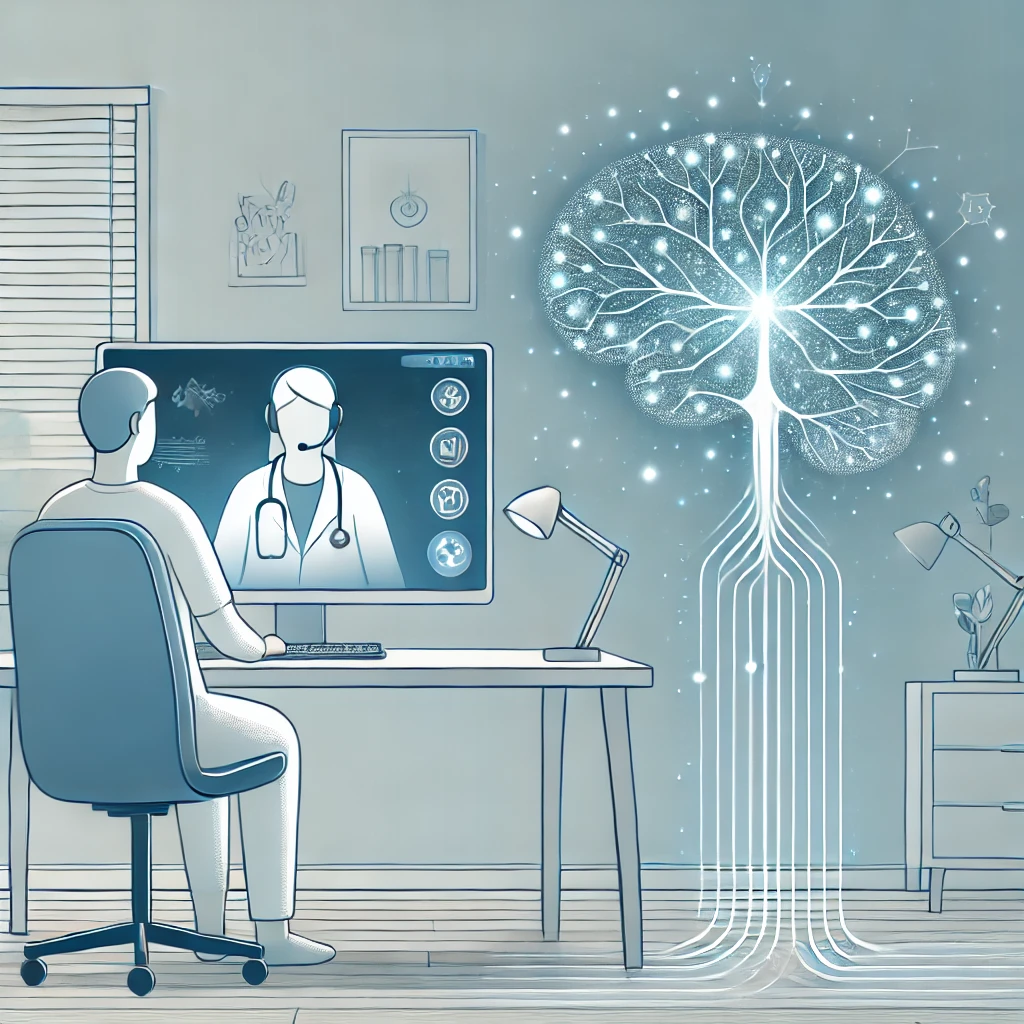Imagine accessing expert neurological care from the comfort of your home. Telemedicine is revolutionizing how we manage nervous system health.
Telemedicine, once a novel concept, is now at the forefront of healthcare delivery, especially in neurological care. This approach enables patients to receive expert consultations, follow-ups, and even rehabilitation without the need to travel. The growing importance of telemedicine, accelerated by the COVID-19 pandemic, has shown its potential in maintaining continuity of care for nervous system disorders.
Telemedicine offers a solution to several challenges in neurological care, including the geographical limitations of accessing specialists, the need for continuous monitoring, and the convenience of receiving care from home. Understanding how telemedicine is reshaping nervous system health management is essential for both patients and healthcare providers.
In this article, you will learn how telemedicine is transforming neurological care, the benefits it brings, and the challenges it presents.
How Telemedicine is Changing the Landscape of Neurological Care
Telemedicine is reshaping how neurological care is delivered, offering new opportunities for patients and healthcare providers alike. By breaking down geographical barriers and enabling continuous care, telemedicine is making neurological expertise more accessible than ever before.
- Accessibility to Specialists:
- Patients in rural or underserved areas often struggle to access neurological specialists due to distance and availability. Telemedicine bridges this gap by connecting patients with experts regardless of location.
- A patient with Parkinson’s disease in a remote area can consult with a neurologist via telemedicine, avoiding the physical strain and financial cost of travel.
- Continuity of Care:
- For chronic neurological conditions, regular follow-ups are crucial. Telemedicine ensures that patients can maintain ongoing communication with their healthcare providers without the need for frequent clinic visits.
- Patients with multiple sclerosis can have regular check-ins via telemedicine to monitor symptoms and adjust treatment plans, ensuring optimal disease management.
- Remote Monitoring and Diagnostics:
- Advances in technology, such as wearable devices and mobile apps, allow for the continuous monitoring of neurological symptoms. This data can be shared with healthcare providers in real-time, facilitating proactive management of conditions.
- Devices that track tremors or seizure activity provide neurologists with valuable data, allowing for timely interventions.
- Tele-rehabilitation:
- Rehabilitation is a critical component of recovery for many neurological conditions. Tele-rehabilitation allows patients to engage in guided exercises and therapies from home, with healthcare professionals supervising remotely.
- Stroke survivors can participate in tele-rehabilitation programs to recover motor functions, reducing the need for in-person therapy sessions and providing flexibility in their rehabilitation journey.
Benefits and Challenges of Remote Consultations and Treatments
While telemedicine offers numerous benefits for neurological care, it also presents certain challenges. It’s important to weigh these pros and cons to understand the full impact of remote healthcare.
- Convenience and Flexibility:
- Telemedicine allows patients to receive care without leaving their homes, reducing the need for travel and minimizing disruptions to their daily routines.
- Elderly patients with mobility issues can benefit greatly from virtual consultations, which eliminate the need for physically challenging travel.
- Reduced Healthcare Costs:
- By reducing the need for in-person visits and associated travel expenses, telemedicine can lower healthcare costs for both patients and providers.
- Virtual visits can significantly reduce out-of-pocket expenses for patients, making healthcare more affordable and accessible.
- Expanded Access to Care:
- Telemedicine increases access to specialized care for patients in remote or underserved areas, where neurological specialists may not be available.
- A patient in a rural community receives a timely diagnosis and treatment plan through telemedicine, which might have otherwise been delayed due to geographic limitations.
Challenges:
- Technology Barriers:
- Not all patients have access to the necessary technology or the skills to navigate telemedicine platforms, which can create disparities in access to care.
- Older adults or low-income patients may struggle with accessing telemedicine services due to a lack of appropriate devices or internet connectivity.
- Quality of Care Concerns:
- Certain aspects of neurological care, such as physical examinations, may be less effective when conducted remotely, potentially leading to missed diagnoses or less accurate assessments.
- The absence of hands-on examination during a virtual consultation can make it challenging to assess certain neurological symptoms, such as muscle strength or reflexes.
- Data Privacy and Security:
- The shift to digital healthcare raises concerns about the security of patient data and the risk of cyberattacks, which could compromise sensitive health information.
- Discuss the importance of secure telemedicine platforms and the potential risks of data breaches, emphasizing the need for robust cybersecurity measures.

